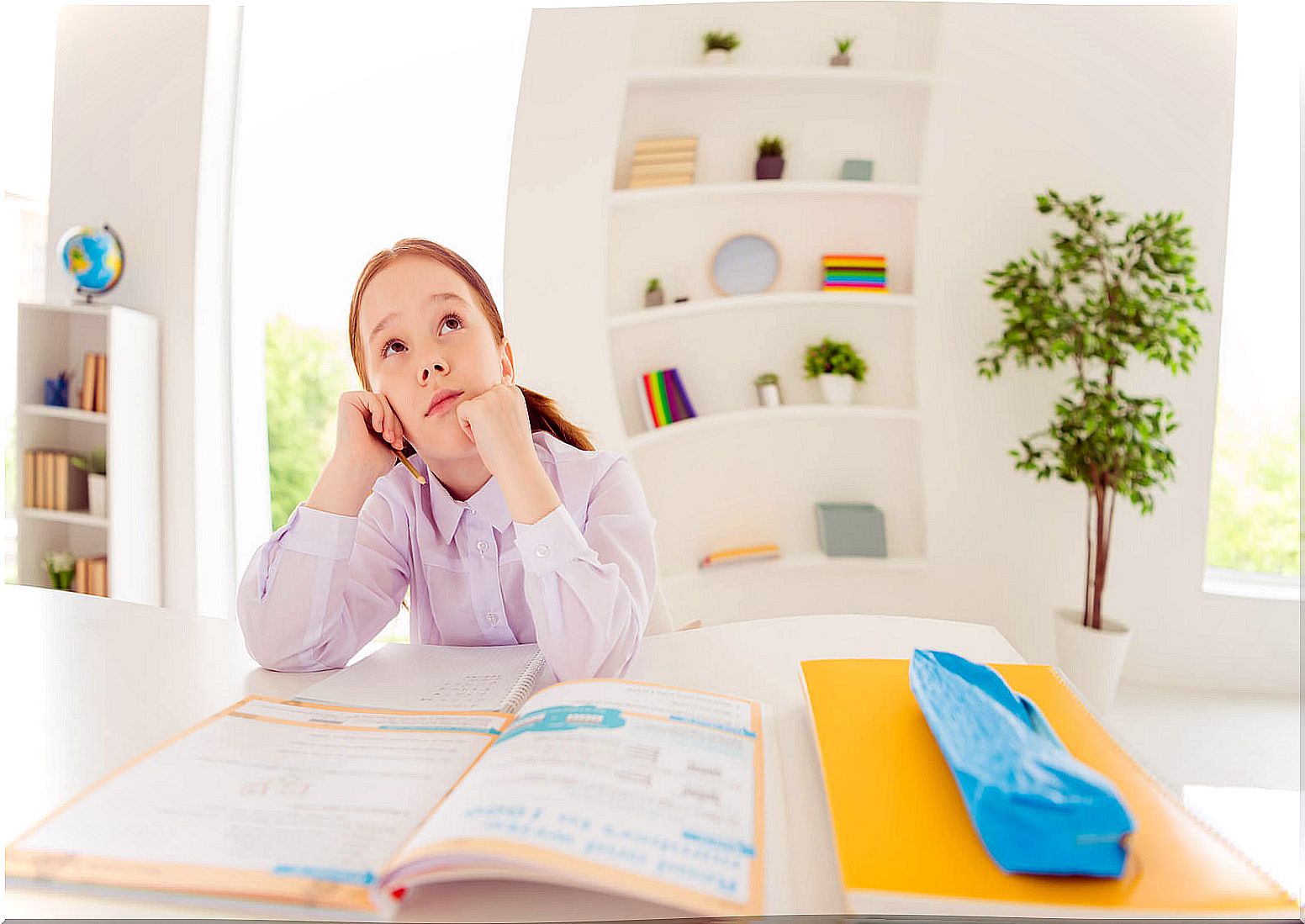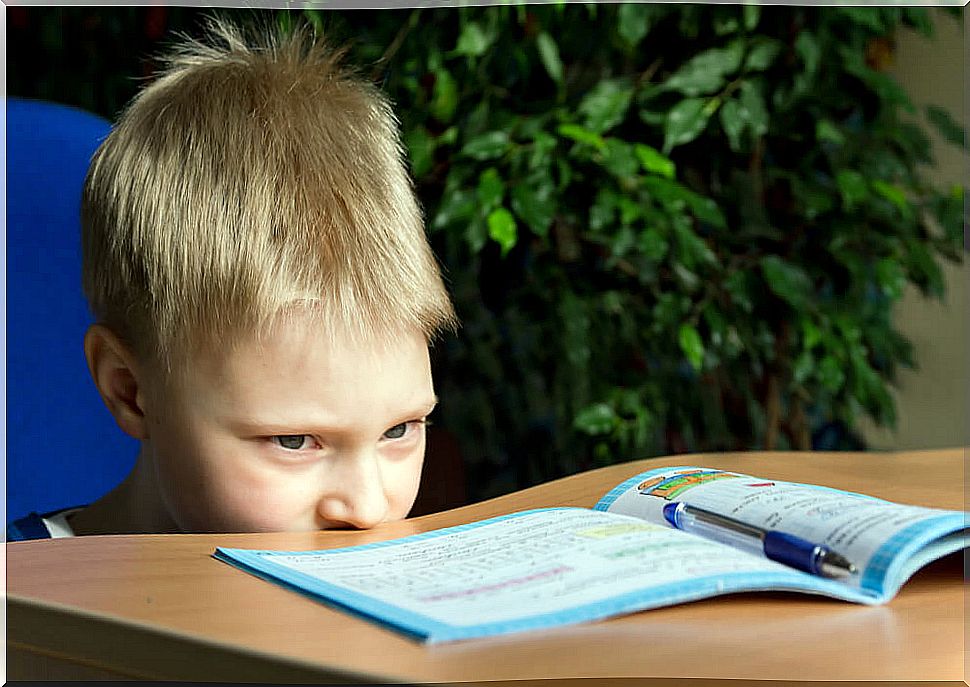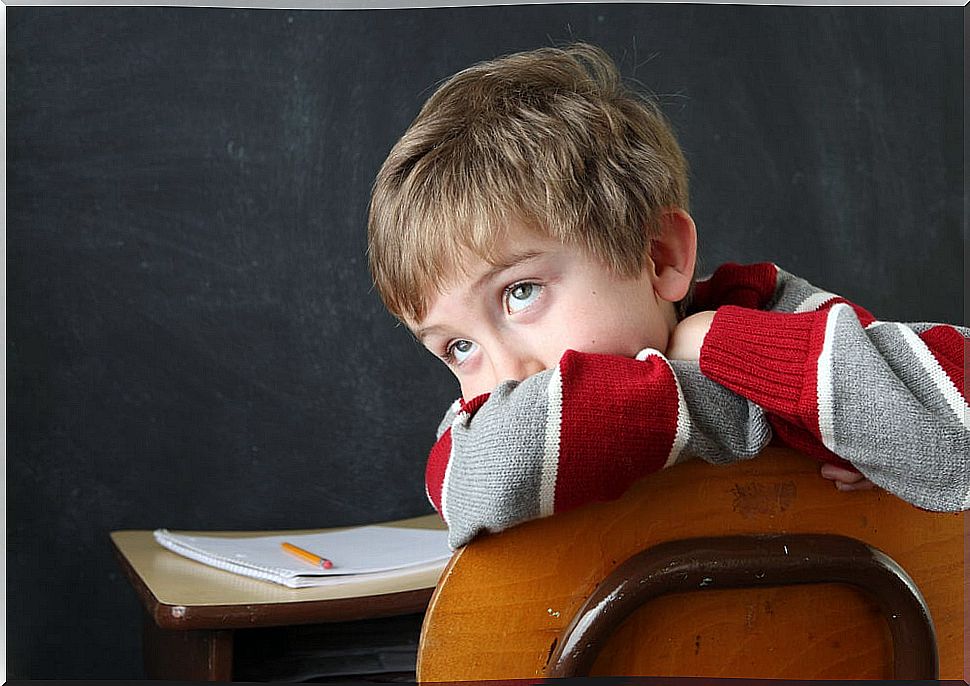The Child’s Distraction In Class: What Can We Do?
There are many distracted or dreamy children whose mind is elsewhere while it is being explained in class. These children can be helped to focus, even when they have ADHD.

The children of the 21st century live surrounded by stimuli. They are so overstimulated that, instead of having a cognitive evolution when attending school, it is common that there are problems due to lack of concentration, hyperactivity and distraction of the child in class.
The little one can be distracted by anything from what is happening around him to his own thoughts. Of course, it is a challenge for the teacher to make the learning process stimulating. However, parents can help our children to be more focused.
What causes the child’s distraction in class?
Today’s child has almost unlimited access to technology, multitasks, searches for information, and has a full schedule of extracurricular activities. Thus, sitting and attentive in front of the teacher or finishing an assignment can be a challenge for him, but also for his parents and teachers.

However, the child’s distraction in class can also be due to health problems. These can be detected by teachers and will be taken care of by parents. The most common problems could be the following:
- He has poor eyesight, can’t see the board well, and is distracted.
- The child does not listen well to what the teacher says and, consequently, is distracted.
- You have an attention deficit disorder (ADD or ADHD when it includes hyperactivity).
Of course, you have to address the physical conditions that may be affecting the child. It is also important to differentiate: a distracted child is not the same as a child with ADD. Children can be restless, dreamy, clueless, or distracted, but that doesn’t mean they have ADD.
This disorder can only be diagnosed by healthcare professionals. A teacher may have experience with children with ADD, but they are not the one who should offer a diagnosis of what is happening to your child.
How to avoid the distraction of the child in the class?
These are some of the recommendations that can be of help to get the child to concentrate in the classroom:
- Diversify tasks. Change subject matter from time to time to help the child restart the attention process. This will help you stay focused longer.
- Set a time frame for each task or activity. It will require the child to be focused to finish on time.
- Organize your tasks. The most difficult ones are best done when the child is rested, while the easy and fun ones can be left for the end of the day, when he is more fatigued.
- Set goals and objectives. It is very important that the child knows what the goals to achieve in class are, so he will put all his attention on achieving them.
- Intersperse breaks. Attention follows a curve that at some point decays. You have to give a few minutes of rest to regain concentration, thus avoiding the child’s distraction in class.
- Ask the child to synthesize and summarize what he heard from the explanation, to write short sentences with the most interesting details. This will help you exercise your attention.
How to help the distracted child at home?

There are some important things you can help your child focus on. And they can be of help in the case of turning them into a routine:
- Make sure your child sleeps and rests well.
- Look him in the eye when you speak to him or ask him for something. It’s the best way to make sure he’s paying attention to you.
- Establish a work routine at home, in which it is very clear what period of time will be dedicated to doing tasks.
- When it’s time for homework, create a quiet work area, free from lights, toys, televisions, or objects that might get their attention.
- Avoid saving more difficult tasks for when you are tired. Tiredness will not let you strain.
- It resorts to the technique of synthesizing and summarizing. That will lead you to focus and remember what you studied.
- Play memory games and other games together that allow them to stimulate concentration and learning.
And, above all, it is essential to have a lot of patience. Working with concentration is a gradual process, and the results are not seen from one day to the next.
What exercises can be done to stimulate concentration?
You can do these exercises in the classroom or at home. Every time you manage to overcome the child’s distraction in class, use positive reinforcement with the child for being attentive. This encourages him to stay focused.
- List three, four, or five things – depending on age – that he can find in the classroom or at home. Ask the child to bring them, so you can check that he has attended the list.
- Say a word or a number. Ask him to make a signal in what he hears his word or number. Then recite a list of words or numbers, among which is the word or number that you mentioned.
- Put different items on a table, in a certain order. Vary the order and ask him to put them back in the way they were initially.
- Store several objects in a box. Close it and ask him to name all the objects that are inside the box.
- Dress up someone else with various decorations. Take out some and ask your child to discover the objects that have disappeared.
What if the child has ADHD?

In the event of a diagnosis of ADHD, the child may need their teacher to help minimize distractions. It also requires that the learning process be very stimulating. In this sense, some recommendations that may be helpful are:
- Place the child near the teacher or with children who have very good concentration so that they are not distracted.
- Integrate it in work groups with calmer children.
- Avoid leaving too much information on the board.
- Make sure you understand the instructions. Writing them down is a great option.
- Before starting a new task, make sure you have finished the one you were previously doing.
Distracted children should not be forced
Distracted or dreamy children should not be forced to pay attention, but rather a kind and loving invitation.
The challenge for parents and teachers is to make the learning process a rich space for awakening creativity. To deal with the child’s distraction in class, you have to get them out of their thoughts and help them stay focused.









